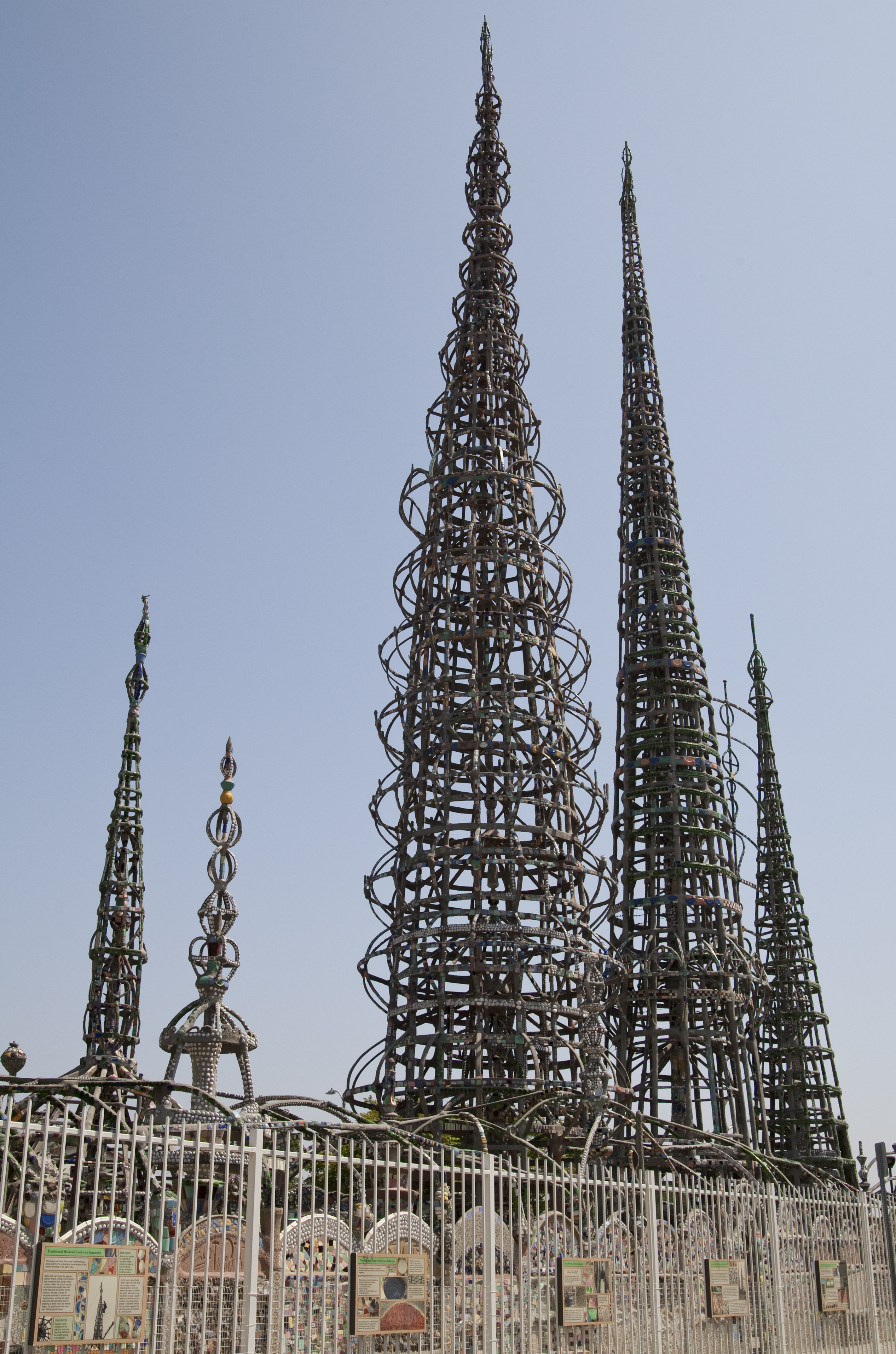UCLA researchers, LACMA work to preserve Watts Towers

About a half-hour drive from UCLA, the Watts Towers stand as a historic landmark.
By Taylor Aquino
May 1, 2013 2:43 a.m.
Cracks splinter the cement that covers the Watts Towers, exposing a steel skeleton to the elements. About a half-hour drive from UCLA, the towers stand as a historic landmark in the neighborhood of Watts and are in need of a lasting face-lift.
Strong winds, earthquakes and occasional rain have complicated any attempts at preservation in the last 60 years the towers have been standing.
But now, UCLA Engineering is partnering with the Los Angeles County Museum of Art to help restore the Watts Towers, said Robert Nigbor, a research engineer in the UCLA Department of Civil and Environmental Engineering and one of the UCLA engineers on the restoration team.
The Watts Towers were originally built by Simon Rodia, an Italian immigrant who began building the Towers in the early 1920s in his backyard, and continued to add to the structure until his departure from Watts in 1954.
If the towers are left in disrepair and the steel of the structure is exposed to rain, the structure could potentially be destroyed, Nigbor said.
UCLA engineers working on the project are responsible for providing data about the movement of the cracks as a result of temperature changes, Santa Ana wind forces and earthquake damage.
Rosie Lee Hooks, the director of the Watts Towers Arts Center, said the towers have provided significant inspiration for many artists and musicians in the area.
“The Watts Towers are considered by some more important than the Statue of Liberty, in that she was made by a Frenchman and floated in,” Hooks said. “The Watts Towers were built by one, single immigrant.”
Many misconceptions about the dangerous environment of the Watts area have overshadowed the towers as an identifying feature of the neighborhood, Hooks said.
Seventeen major structures stand at varying heights and are composed of many interconnected steel pieces reinforced with a concrete mortar mixture. Pottery shards, seashells and colored glass are among the many objects used to decorate the steel towers.
In 1963, the towers were named the 15th Historic-Cultural Monument in the City of Los Angeles, and people from around the world visit Watts to see the edifice.
In January 2011, LACMA made an agreement with the City of Los Angeles to help revise the current maintenance plan for the towers and repair the damage the structure has endured, said Frank Preusser, a senior conservation scientist at LACMA.
LACMA is trying to produce a treatment for the cracks that will prevent new fissures from forming over a longer period of time, Preusser said.
Conservationists are not usually trained to do large-scale structural engineering, Nigbor said.
“It was clear that (UCLA engineering) could add a useful dimension to the project,” Nigbor said. “And it fits well with the kind of research we do on structures.”
Nigbor said the project is fascinating for engineers because it has the extremes of what they deal with in structures and materials. The Watts Towers feature uncertainties that are not typical in engineering projects, he said.
Nigbor added that the team aims to find out which of the three forces causes the most damage, and produce a long-term monitoring program in which LACMA would track this damage.
“The overall goal of our engineering effort is to understand why the structure is cracking,” Nigbor said. “And why every time they put a band-aid on it, the wound reopens.”
Ertugrul Taciroglu, an associate professor in the civil and environmental engineering department and the principal investigator for the project, said LACMA contacted him about working on the towers last December.
Finances for the project are limited, but UCLA Engineering is currently using a $15,000 grant from the National Science Foundation, which allowed them to access funds and additional resources from the Network for Earthquake Engineering Simulation at UCLA, amounting to around $100,000, Nigbor said.
The plan for conserving the towers is expected to undergo its first round of revisions at the end of this year, but LACMA plans to petition for more time to collect data, Preusser said.
UCLA has funding through December 2013 for the project, Nigbor said.
Phillip Thompson, a resident of Watts for more than 20 years, who recently moved across from the Watts Towers, said he doesn’t think the younger generation cares about the towers as much as the older generation still does.
“If you see any community members come over here, the ones in their sixties and seventies, they know what these things represent to them,” Thompson said.
The towers put Watts on the map, he added.
“It’s an inspiration for the community because, were it not there, you’d just have another block of houses with graffiti on them,” Nigbor said.


